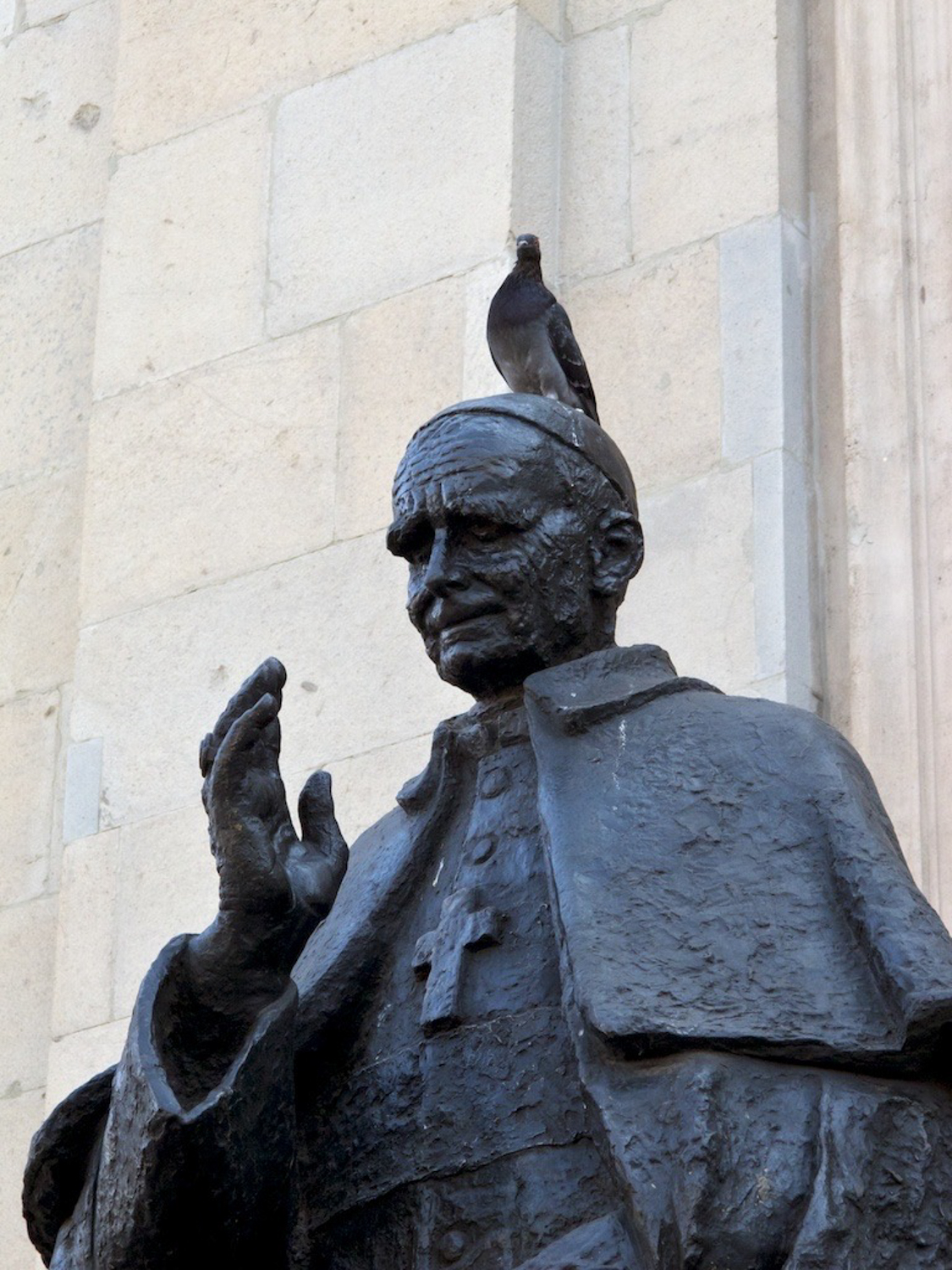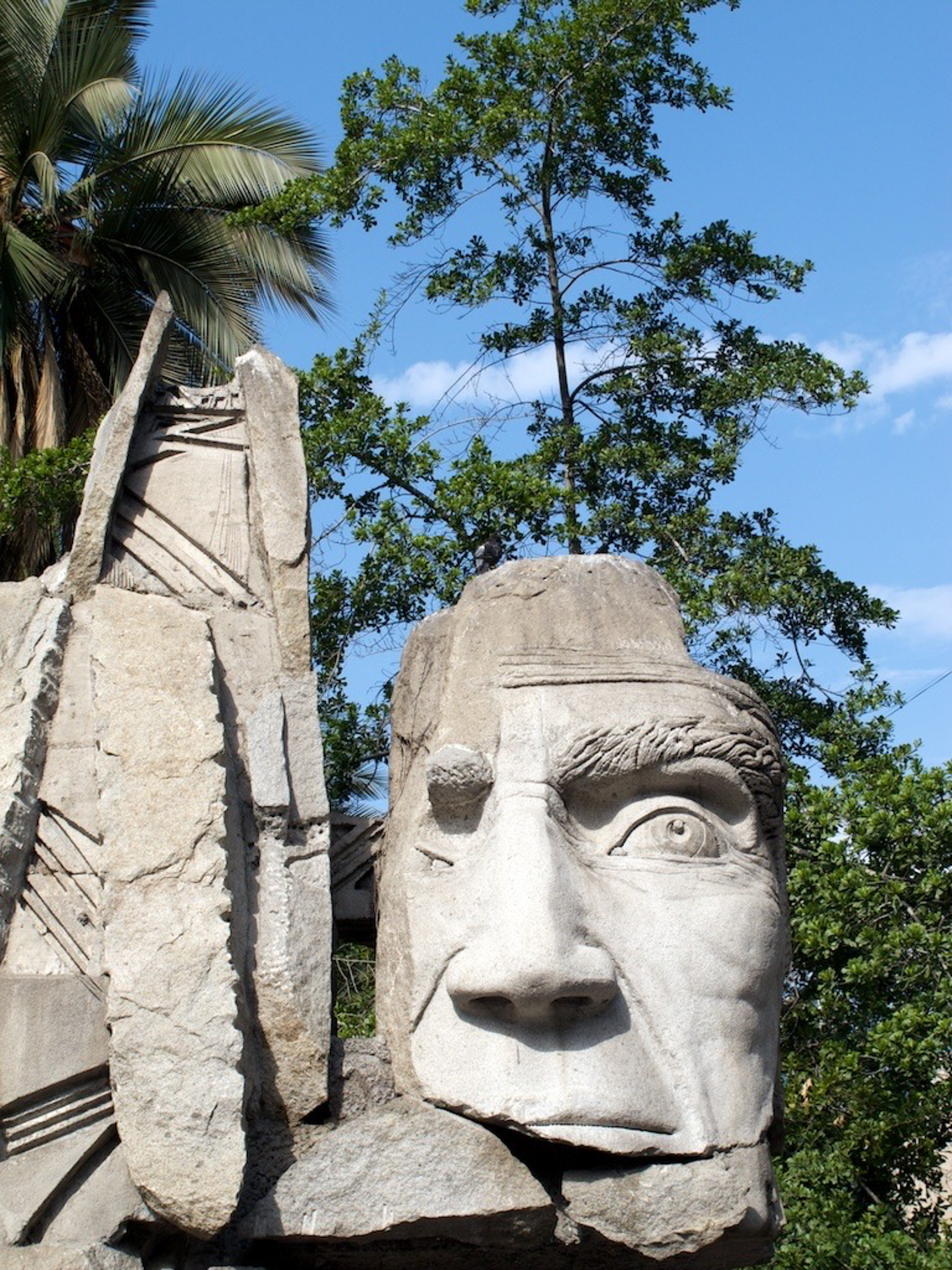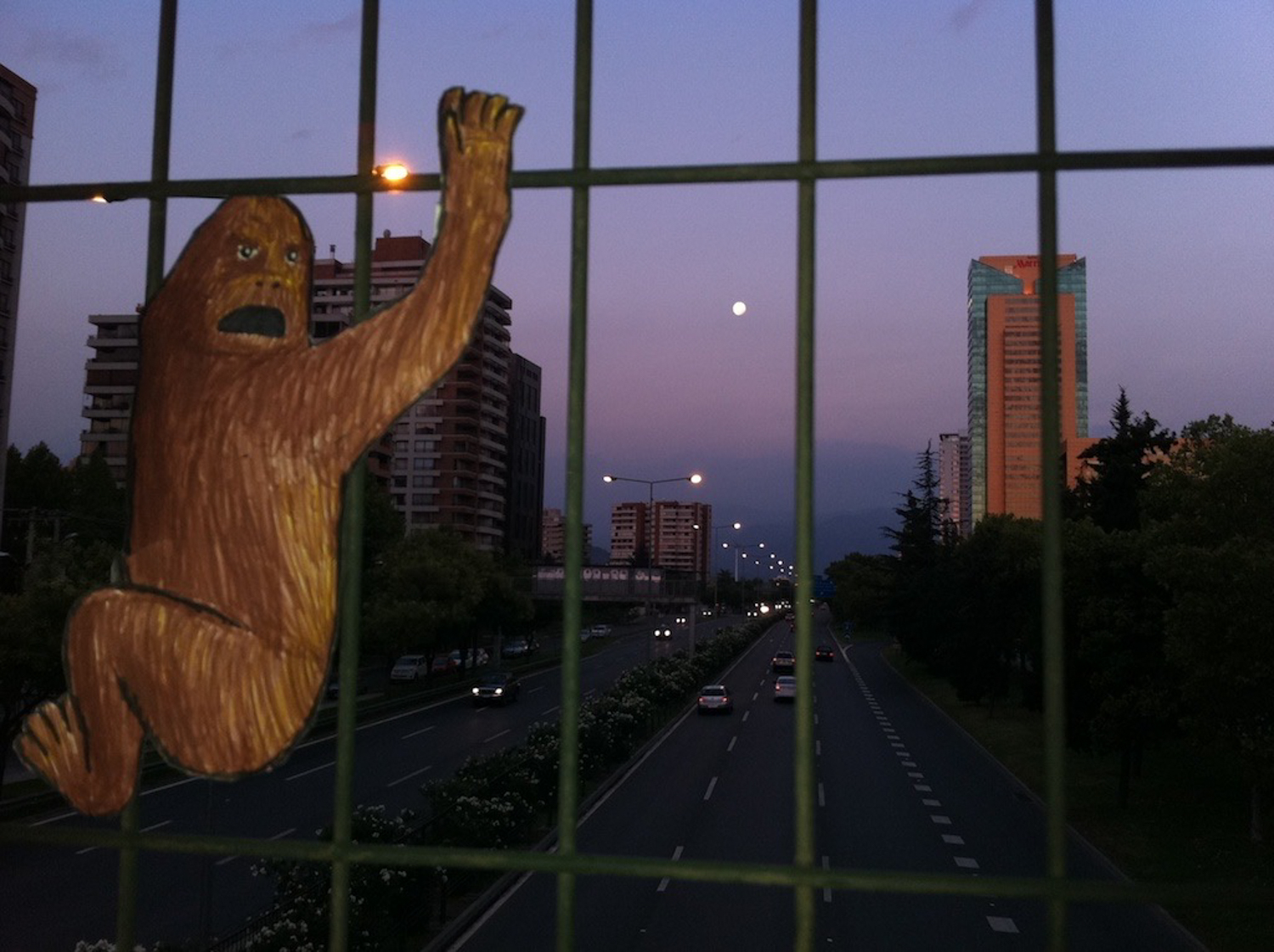We arrived in Valparaiso this morning before 6 a.m., surrounded by cranes, dock workers, and many Chilean Navy vessels. It was a fairly smooth arrival, and we waited for our announced time for departure.
Leaving the ship was much more efficiently done as a debarkation process than it had been when leaving the ship to visit any other ports. Guess they were ready to have a little shore leave before heading back to Buenos Aires!
After we grabbed our bags, we boarded a bus and headed out through Valparaiso to Santiago.
As our travel guide told us, Valparaíso is one of Chile's most important seaports and an increasing cultural center in the Southwest Pacific hemisphere. The city is the capital of the Valparaíso Province and Region.
And, although Santiago is Chile's official capital, the National Congress of Chile was established in the city in 1990.
Valparaíso played an important geopolitical role in the second half of the 19th century, when the city served as a major stopover for ships traveling between the Atlantic and Pacific oceans by crossing the Strait of Magellan. Always a magnet for European immigrants, Valparaíso mushroomed during its golden age, when the city was known by international sailors as “Little San Francisco” and “The Jewel of the Pacific.”
Examples of Valparaíso’s former glory include Latin America’s oldest stock exchange, the continent’s first volunteer fire department, Chile’s first public library, and the oldest Spanish language newspaper in continuous publication in the world. The opening of the Panama Canal and reduction in ship traffic dealt a staggering blow to Valparaíso, though the city has staged an impressive renaissance in recent years.
As we made our way to Santiago, we passed several vineyards, to include Concha y Toro. Very nice scenery the whole way there! Unfortunately, once we got into Santiago, there was much construction going on. Our bus driver got completely lost, and the tour guide wound up asking for directions from the street workers, a gas station attendant, and finally a cab driver. As we whizzed through an upscale neighborhood, taking many tree branches with us as the driver drove haphazardly through, we finally made it to Kennedy Avenue, and our hotel.
Santiago, a very smoggy city with its air pollution trapped in the main city due to the surrounding Andes mountains, is the capital and largest city of Chile, and is located in the country's central valley at an elevation of 1706 feet above seal level. Thanks to Chile's steady economic growth, Santiago is now one of Latin America’s most modern metropolitan areas, with extensive suburban development, dozens of shopping centers, and impressive high-rise architecture. It was founded by Spanish Conquistador Pedro de Valdivia on February 12, 1541 with the name Santiago del Nuevo Extremo, as a homage to Saint James and Extremadura. Valdivia chose the location of Santiago because of its climate, abundant vegetation and the ease with which it could be defended—the Mapocho River then split into two branches and rejoined further downstream, forming an island. The Inca ruler Manco Cápac II warned the new rulers that his people would be hostile to the occupiers. The Spanish invaders had to battle against hunger caused by this resistance. Pedro de Valdivia ultimately succeeded in stabilizing the food supply and other resources needed for Santiago to thrive.
The layout of the new town consisted of straight roads of 12 varas (47.1 ft) width, in equal intervals of 138 varas (541.6 ft) perpendicular to each other. With nine roads in the east-west direction and 15 in the north/south direction, there were 126 blocks that formed the so-called manzanas, or square cut.
Lunch was at a local mall, with Kaz, his wife, and Jaques. It was a lovely little Italian place, outdoor seating (unfortunately with smokers, but the air dissipated it a bit) and musicians playing as we ate. Food was great, and copious, and none of us could finish it.
Wayne and I then went on a walking tour of Santiago center, taken directly from the pages of our Lonely Planet guide to Chile. For those who are looking at buying the iPhone or iPad Lonely Planet guides, I advise waiting. They do not quite yet have the formatting down correctly, the maps are broken up poorly, and they omitted the rear index. It made planning for the walking tour a bit difficult.
We got on the subway (Santiago has a wonderful subway system) near the military academy, and headed out to Puente Cal y Canto, where we saw the Estacion Mapocho, the old train station, which is now a cultural center. From there we went to Mercado Central, where there was a nice walkway, and closed off to cars. From there we went to the Plaza de Armas, and then headed to the Ex-Congreso Nacional and Tribunales de Justicia. The architecture was stunning, and again there was a mix of the classical with modern. I much preferred the classical!
On from there we went to the Plaza de la Constitucion, where there is a statue of President Salvador Allende, who was murdered during the CIA backed 1973 coup inside the presidential palace, Palacio de la Moneda. Beyond the palace was the Plaza de la Ciudadania, marked by a HUGE Chilean flag, and the Alameda, which we took to Cerro Santa Lucia, which provided beautiful views of the city.
From here, we returned to our hotel via the subway, and had a pleasant dinner at a steakhouse (Wayne ordered salmon!) with Ivan and Sue before we all headed out on our own ways. Very pleasant time, and we really enjoyed seeing them again. I am very glad that they have booked on the Germany cruise, and that we will continue to travel together.
An early bed after a commemorative pisco sour with Don McAllister, in preparation for the morning’s travel to Peru.




